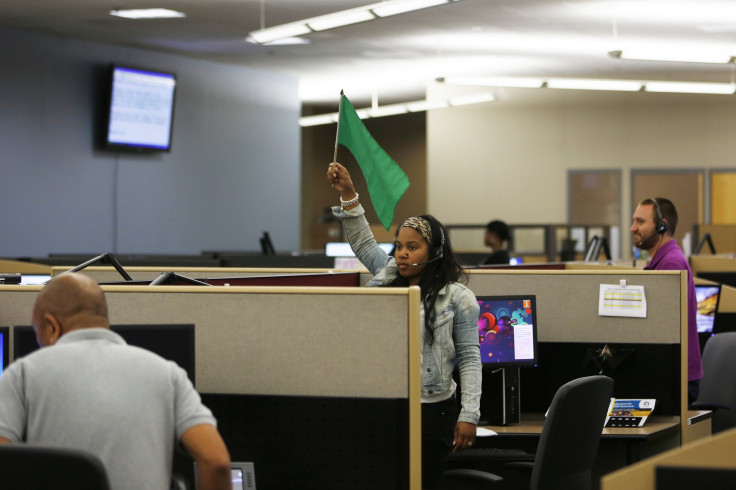Obamacare 2015: National Health Insurance Enrollment Above Expectations, But States Fall Short

The 10.5 million people who signed up for health insurance plans through HealthCare.gov surpassed the government's expectations of 9.1 million applicants for the 2015 open enrollment period. But in state-run exchanges, the numbers were less thrilling. Many states extended the deadline for enrollment, citing technical issues or long wait times, but low enrollment numbers may also have played a role in those decisions.
Most of the 14 states that run their own exchanges have extended their enrollment deadlines, although some were extended only for those who had already started applications for health insurance and failed to finish by the Feb. 15 federal deadline. Maryland extended the sign-up process until Feb. 28, Rhode Island and Massachusetts until Feb. 23 (citing winter weather), and California to Feb. 20.
In Rhode Island, estimates of the number of residents who would buy coverage through the state's exchange, HealthSourceRI, ranged from 70,000 to 100,000. As of Jan. 15, a month before the original sign-up deadline, not even 29,000 had signed up for health coverage. Insufficient enrollment could push the state to add fees to its health care plans to cover operating costs -- fees that could make plans prohibitively expensive for some Rhode Islanders. One state lawmaker in 2014 suggested turning Rhode Island's exchange over to the federal exchange and is expected to file a second bill calling for such a move in 2015.
Prior to the Feb. 15 deadline, California reported it was falling 400,000 short of its goal of signing up 1.7 million people for health care coverage during the 2015 open enrollment period, and it announced before the deadline that it would extend enrollment to Feb. 20. Some states that initially did not offer extensions did so at the last minute, including Hawaii, after some applications were delayed due to technical glitches and other issues.
Washington state has tacked on more than two months to the original deadline, allowing Washingtonians to enroll in a health care plan through the state-run exchange, Washington Healthplanfinder, until April 17. The Seattle Times reported the period would be for those who either did not realize they would have to pay a tax penalty if they did not have health insurance or for those who began the enrollment process but were unable to complete it, whether because of technical issues or because they were unsure of how to do so.
One possible reason for the extension is that in order for the state's exchange to be self-sustaining, it needed to enroll about 50,000 more people than the nearly 160,000 who signed up during the open enrollment period that began Nov. 15, 2014 and ended on Sunday, Feb. 15. State officials cited a number of reasons for why numbers were low, including the fact that more people were eligible for Medicaid than expected and the fact that some may not realize the size of the tax penalty for not having health insurance until after they begin paying their taxes. Washington's extended enrollment period lasts until two days after taxes are due on Apr. 15.
In 2015, the tax penalty for not having insurance is $325 per adult or 2 percent of one's income, whichever is higher. The federal government announced Monday, one day after the Feb. 15 deadline, that it would extend enrollment for those who were unable to complete their enrollment applications due to long wait times over the weekend or other sign-up issues.
© Copyright IBTimes 2024. All rights reserved.












